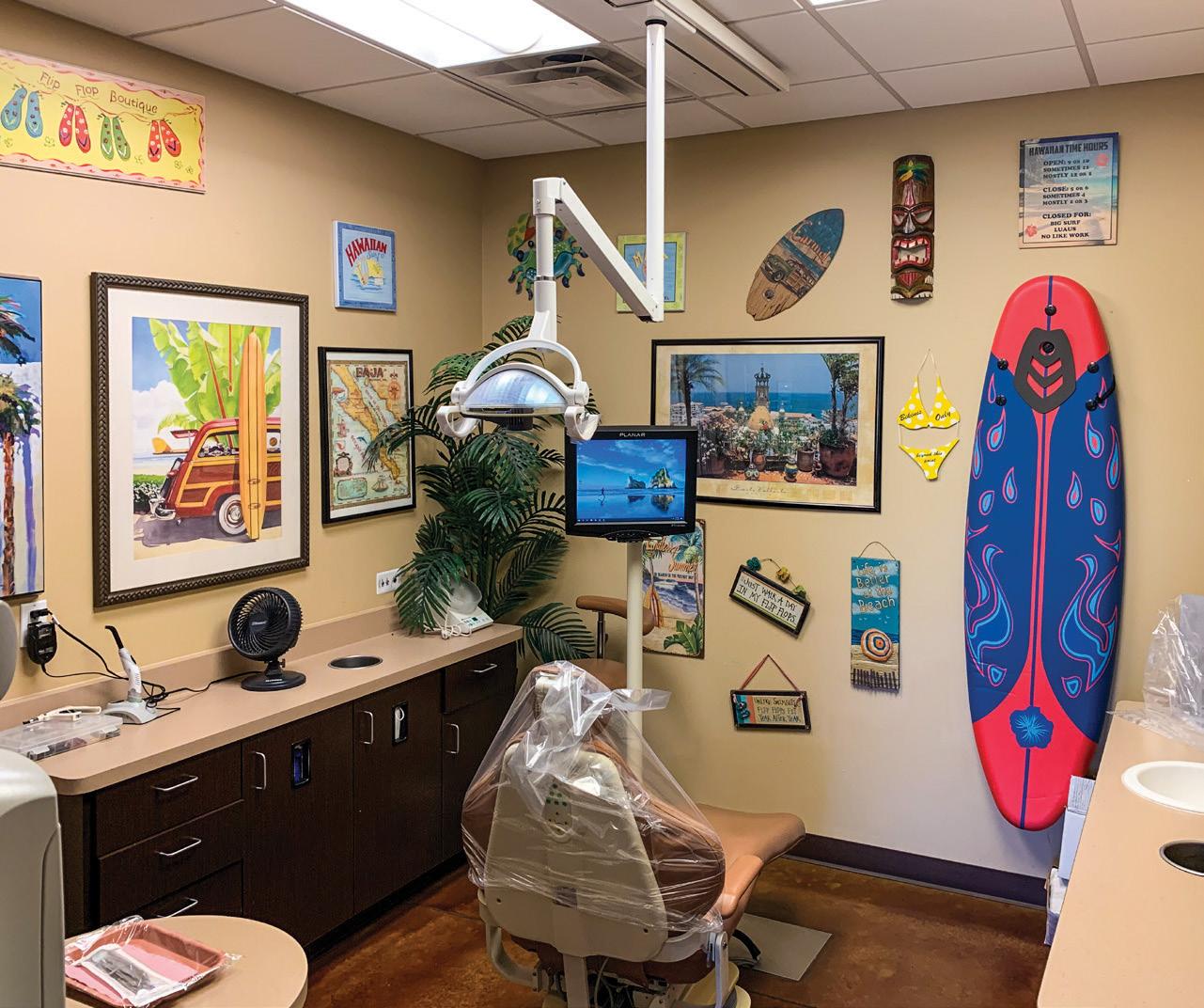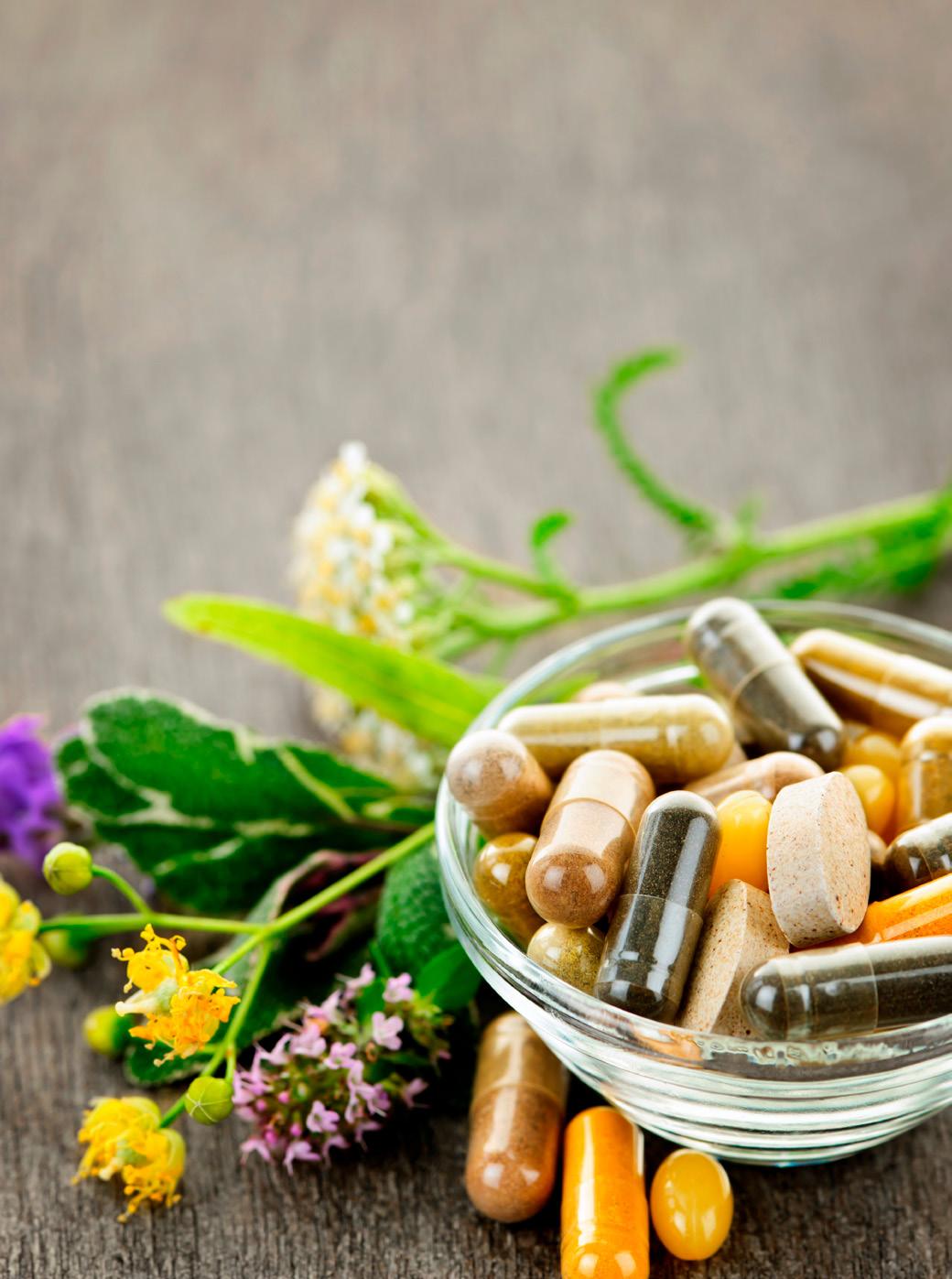
7 minute read
Tinctures, Tonics, and Teas, Part II
Tinctures, Tonics, and Teas, Part II: What You Need to Know
BY RIC COGGINS
IIn previous Green Living issues, I’ve shared in-depth the Hoxsey Herbal “Tonic” which I largely credit for saving my own life, as well as the lives of my grandfather and great-grandmother.
You may recall that the Hoxsey tonic was developed from “weeds” that John Hoxsey, a 19th-century horse breeder in Illinois, had observed his cancer-ridden favorite horse eat when turned out to pasture to die… and instead, then fully recovered. Hoxsey’s tonic consisted of red clover, burdock root, stillingia root, barberry root, licorice, poke root, cascara amarga, prickly ash bark, and buckthorn bark. Now, I certainly could have gathered piles of those whole herbs and consumed them by the pound as did the horse, but by the Hoxsey clinic concentrating those herbs’ respective properties into a tonic, I was able to simply take one teaspoon of it in a glass of water a couple of times a day in order to enhance my immune system. I fully beat the cancer. Not only do herbal medicinals concentrate benefits, they greatly enhance their storage longevity, and perhaps most importantly, they afford the convenience of being able to keep these benefits easily within your reach, in your desk drawer, your purse, or even the front pocket of your favorite pair of blue jeans. When I was a kid in the ’60s and ’70s, herbal remedies were not always easy to acquire, and were often expensive due to their scarcity. That’s why my dad made them at home. Today, herbal medicinals have become more mainstream, and you can find them on the shelves of grocery stores—but like many things that have become commercialized, their quality can be suspect. While some of the best herbs in the world come from China, so do some of the worst. China has huge toxicity problems with pollution, which finds its way into some of its herbs. You need to do your homework on sourcing your herbs, as it does little good to nourish yourself and poison yourself at the same time. If you haven’t sprayed herbicides in the last three years, one place you may want to look first for medicinal herbs is in your own backyard! When I was diagnosed with cancer, one of the first things I learned is that anti-cancer medicinal herbs were


Experience the Difference of a Holistic & Biological Approach to Your Dental Needs and Overall Health
• Bio Compatible Dentistry • Esthetic Dentistry Lumineers/Veneers • Complete Family Dentistry • CAVITAT/3D Cone Bean/Digital Radiology • Centralized East Valley Location • All Services Provided by Arizona Licensed
General Dentist
10% OFF
YOUR INITIAL VISIT
When you mention Green Living and bring in this offer for redemption. Cannot be combined with any other offer. Restrictions may apply. Expires 3/31/21.
Dr. Michael D. Margolis
One of two certified Oral Systemic Balance Providers in Arizona Dr. Stephen A. Kovar DMD, FAGD


growing right under my nose (and feet)! In fact, one of the summer weeds I hated the most turned out to be a powerful anti-cancer agent. The purslane plant, which has thick red stems and fleshy green leaves, is higher in omega-3 fatty acids than any other plant on Earth. Who knew? And not only that, but purslane has high concentrations of vitamin A, vitamin C, vitamin B, magnesium, calcium, potassium, and iron. Although purslane is usually considered to be a weed in most yards, alkaline diet fans should take note that this low-calorie, succulent green plant delivers four times the alkalinizing power of pure lemon juice. Recent studies reveal that a purslane green tincture will kill over 80% of cancer cells in vitro. Purslane extracts have also been shown to be toxic to breast cancer, lung cancer, cervical cancer, and sarcoma cells in other studies. Purslane constituents also include such anticancer flavonoids as kaempferol, apigenin, luteolin, and quercetin. You may recognize quercetin; it’s a powerful antiviral currently being used to prevent and treat the Covid virus. You can benefit from purslane by eating it raw in salads, or by including them in cooked greens. To concentrate these ingredients into a powerful tonic, you can make an alcohol tincture with them. The recipe is easy, as with purslane you do not even have to dry it first. The formula is simple. In a blender or food processor, mix one part purslane to two parts “menstruum.” Menstruum is the jargon that refers to the liquid solvent into which the plant nutrients are leached. In this case, the menstruum is comprised of 50% 190 proof alcohol and 50% distilled water. Blend only briefly, until the purslane is “chunky,” then pour into a canning jar and store in a dark, accessible location. I say accessible, because you will need to agitate the mixture a couple times a day for six to eight weeks while the magic happens. When this part is complete, you can decant the mixture by straining it through cheesecloth or muslin, squeezing the tincture out. To get the most tincture from the mesh, you can use a potato ricer or a grape press. If you really want a clean tincture, you can then filter it through a paper coffee filter. Once you have your finished tincture, you should pour it into a dark bottle for storage. My yard also yielded another anti-cancer herb—it was in my mulberry trees. It turns out the mulberry leaves and mulberry root bark are also very powerful anti-cancer herbs. Harvesting the root bark is labor-intensive, but harvesting leaves is pretty easy. Studies have shown mulberry leaves inhibit cancer stem cell growth, including those of neuroblastoma, a particularly insidious brain cancer. A tincture can be made of dried mulberry leaves in a 1:5 ratio; one part dried leaves by weight to five parts menstruum by volume. In this case, since the leaves are dried, the menstruum can be 40% 190 proof alcohol to 60% distilled water. Decant as with the purslane after about six weeks. Again, it’s important that you use only organic herbs for your medicinals, as you do not want to be “drawing out” pesticides and herbicides into your tonics. There are many great resources for organic herbs, both local and online. Locally I use SW Herb in Mesa and Natural Grocers. Online, I have had consistent luck with Mountain Rose Herbs. It’s also even more important to locate organic sources for the alcohol you use. Today, most alcohols are made with genetically modified plant sources such as GMO wheat, GMO corn, and GMO potatoes. This means they are genetically modified to not die when Round-Up (glyphosate) is sprayed on them. And even if the grains are not GMO, it is typical to spray Round-Up on the non-GMO crops to “desiccate” them for harvest. Either way, the grains are laced with glyphosate, which survives the distillation process of the alcohol. You can buy French Vodka (40% alcohol) that is organic and out of the bottle makes a good menstruum for dried herb tinctures. You can also source organic sugar cane alcohol from laboratory supplies at about $110 per gallon. And if all of this sounds like a lot of work and expense and you just want the medicine, with what you know now, you can research sources for organic tinctures, glycerites, oils, and syrups. Also feel free to reach out to me, via the magazine, as I process about a dozen different varieties for myself and my friends, and am always looking to produce more varieties that will help folks to be well.

Let Us Help Jump-Start Your Natural Healing Abilities
Chronic Illness?
Have not felt well since? For both acute and chronic conditions try: • IV Ozone • IV Immune boosting • IV Vitamin C nutrients • Oral supplements • Tissue oxygenation
Call us for a 15-Minute FREE Consultation 480-240-2600
M. Grout MD, MD(H)
10210 N 92nd St, Suite 104 • Scottsdale, AZ 85258
www.arizonaadvancedmedicine.com
COVID-19 Testing Available
Ask about options for immune system boosting Mention Green Living magazine and receive 10% off your first visit








